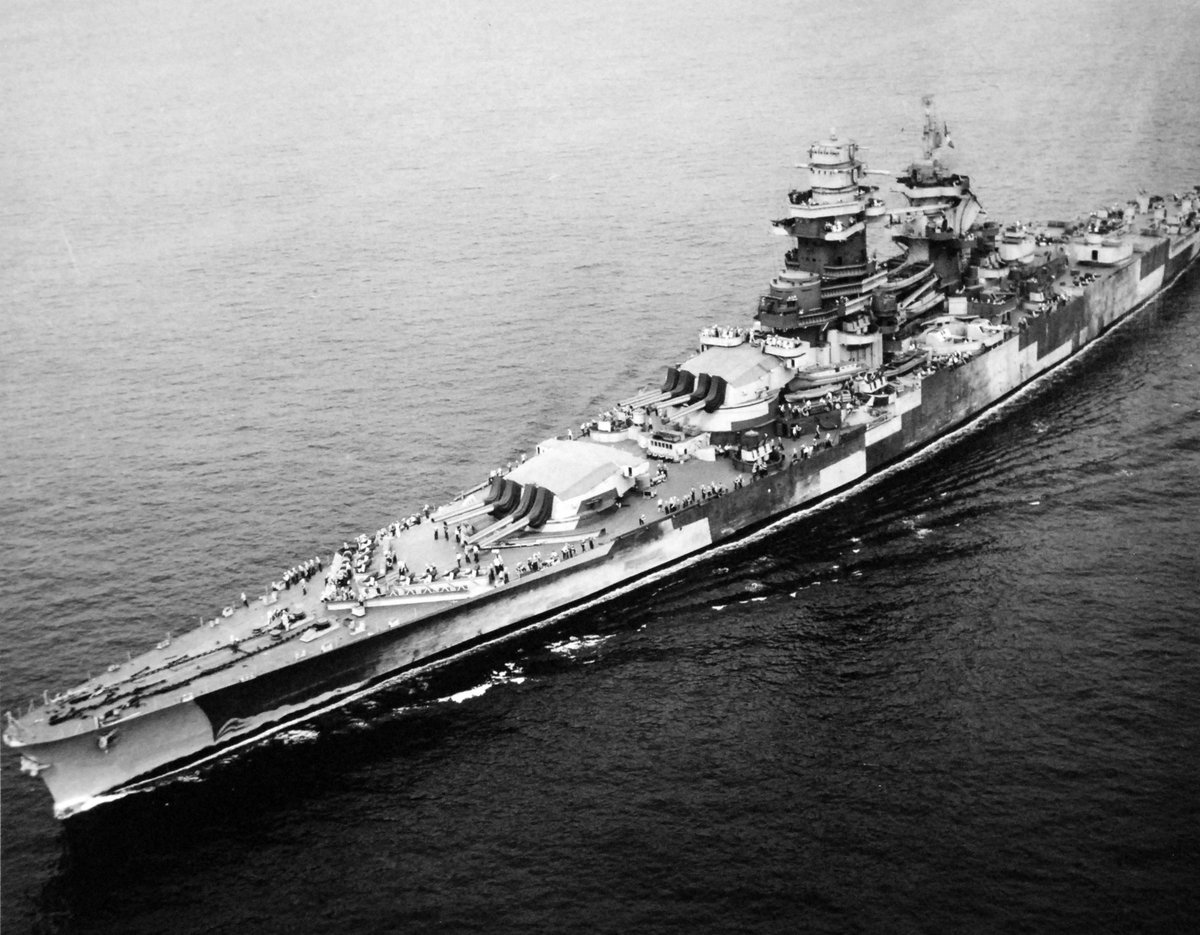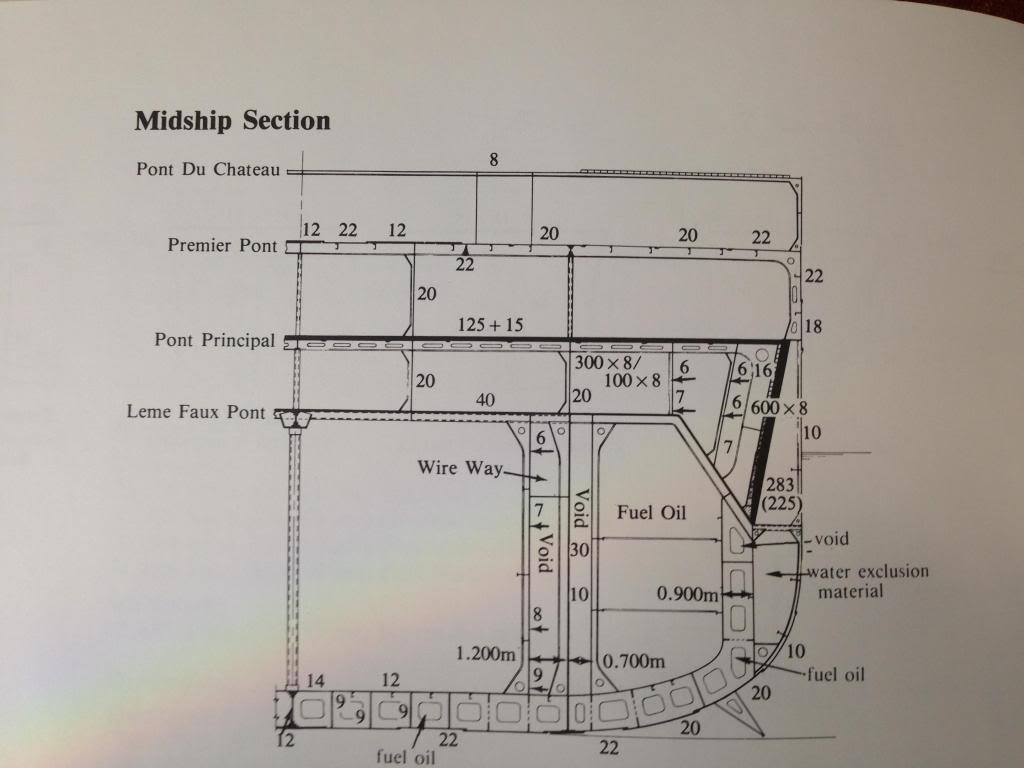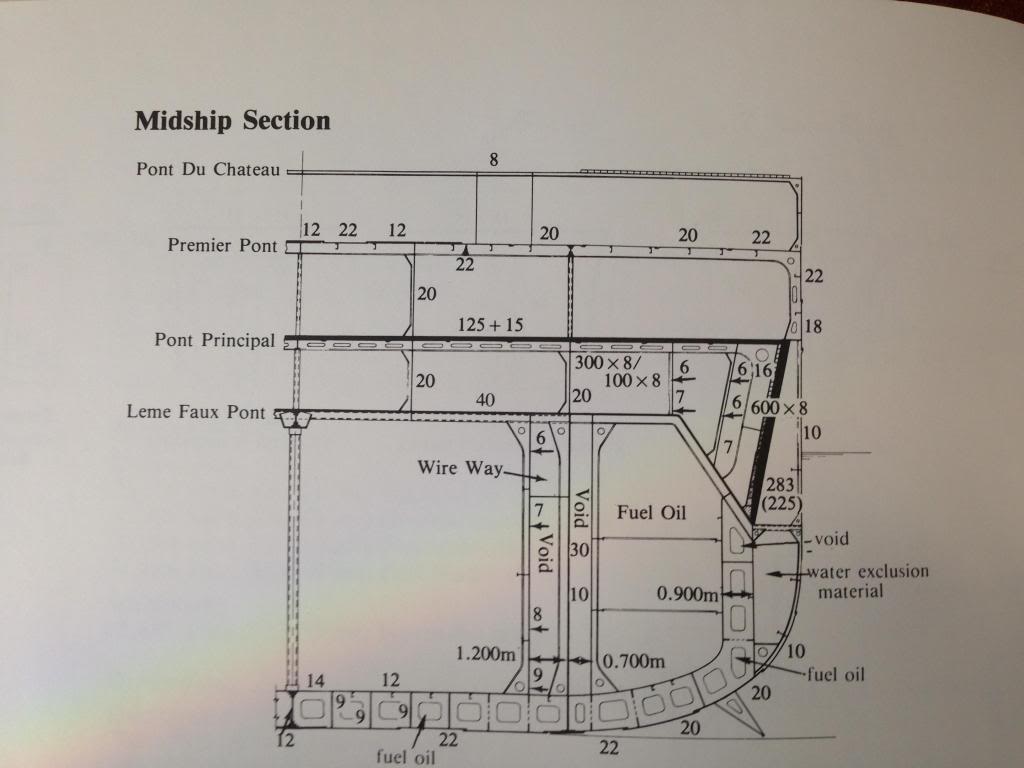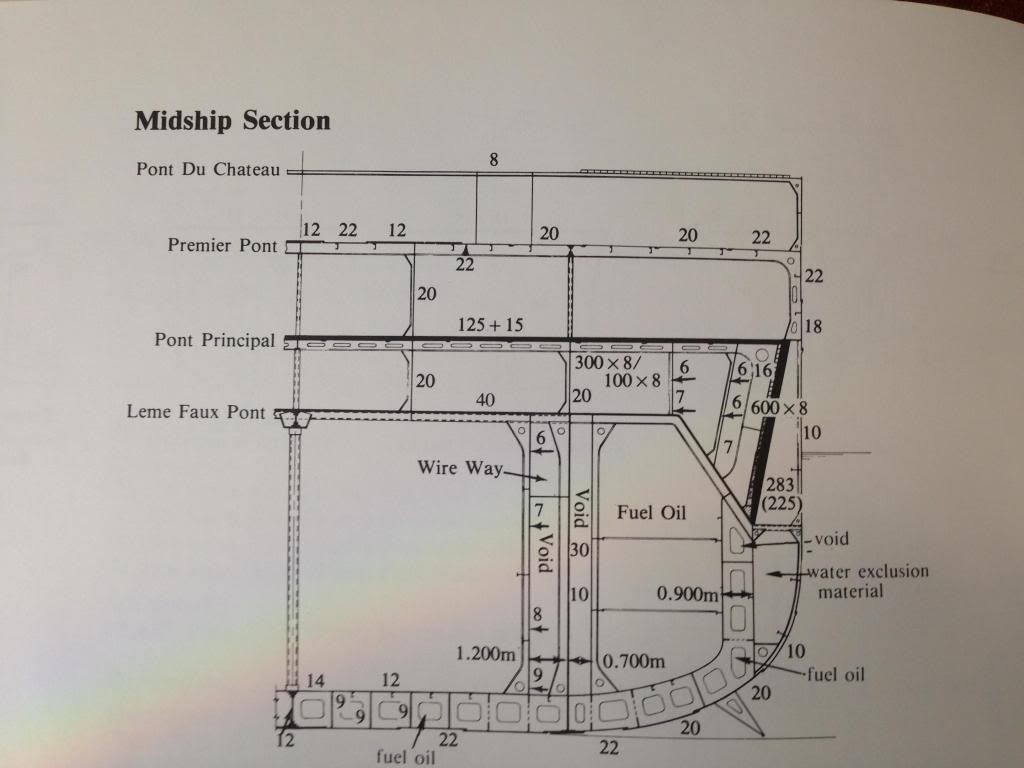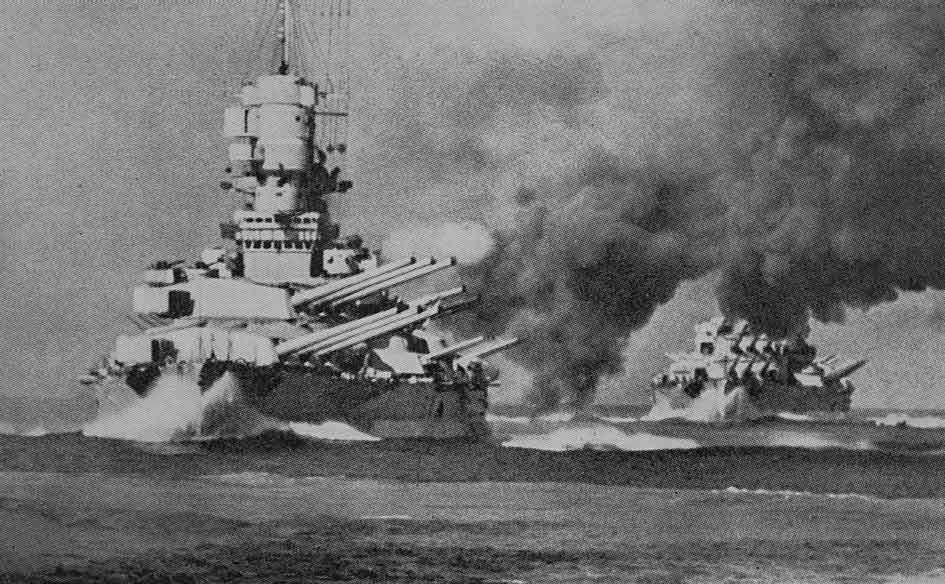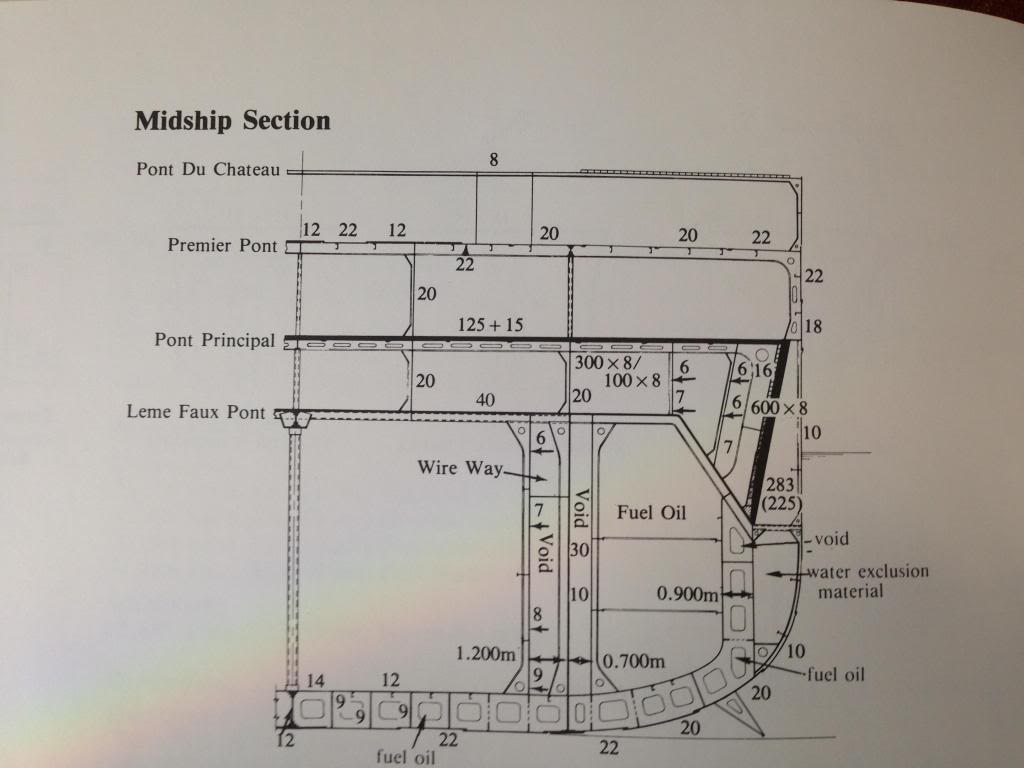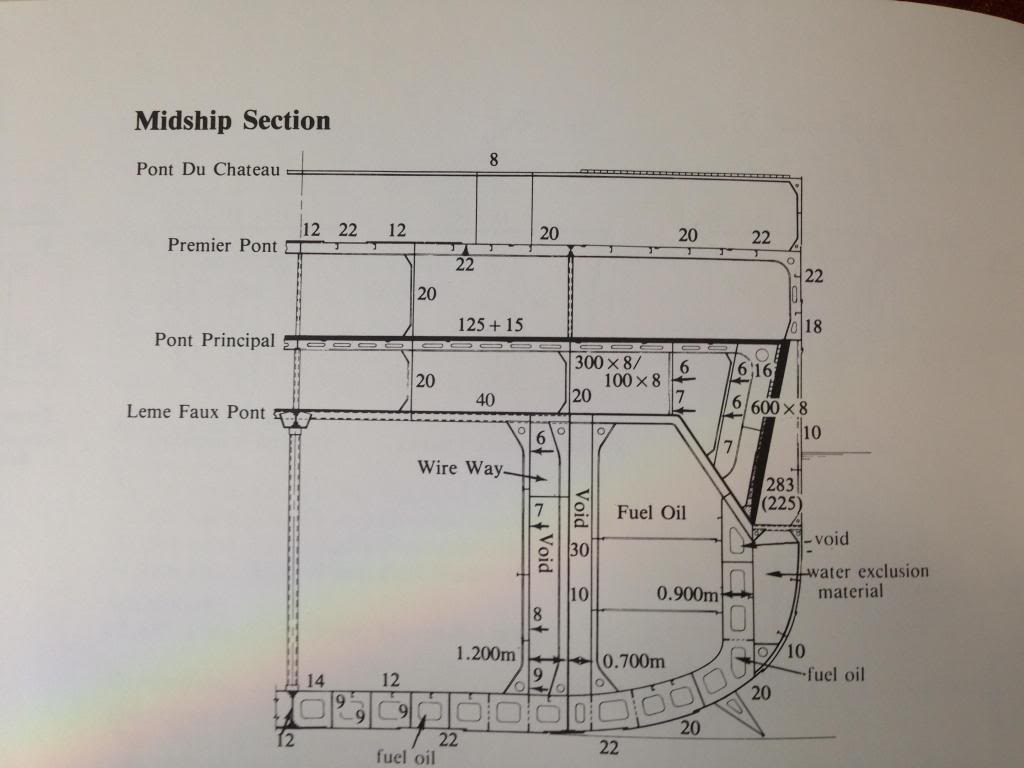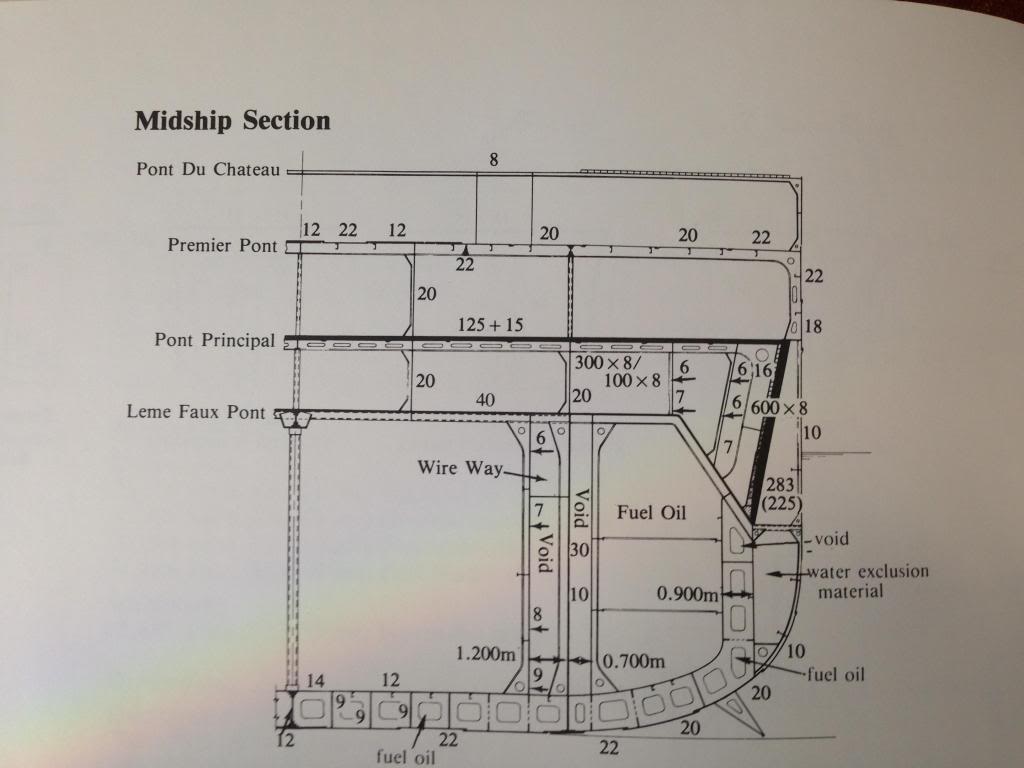The Richelieu class and underwater protection.
The system was unique, not well understood, and often overlooked. However, the truth of the matter is that the class carried one of the most effective underwater protection systems among its peers.
The system was unique, not well understood, and often overlooked. However, the truth of the matter is that the class carried one of the most effective underwater protection systems among its peers.
The Richelieu class utilized a multi-layer (remember the American underwater protection posts?) system incorporating void compartments, both empty and liquid-filled.
The system was carried over from the proceeding Dunkerque class and scaled up for the Richelieu class.
The system was carried over from the proceeding Dunkerque class and scaled up for the Richelieu class.
Starting from the outside we already arrive at one of the lesser understood components of the system. Just past the outer hull plating we have our first layer.
This void compartment was filled with a substance called ébonite mousse. This was a water-resistant material.
This void compartment was filled with a substance called ébonite mousse. This was a water-resistant material.
Most people seem to be under the belief that this was some sort of sealant, designed to plug up ruptures and prevent flooding. Due to the damage the Richelieu class took in service, this has led to many considering the system a failure.
However, there was more to the material.
However, there was more to the material.
The Richelieu class carried its armor belt internally, behind the outer hull plating. This is wonderful for weight savings, but it does make the ship vulnerable. Shells would have to punch through the outer plate to hit the belt.
Even if the shell is stopped at the belt, the outer hull is holed, allowing water to flood into the ship. The ébonite mousse was intended to fill this vulnerable outer void, leaving less space for the water to enter.
This trick was not specific to France.
This trick was not specific to France.
Just about every nation that used an internal armored belt tested a filled outer void to address this issue. For the Littorio class battleships, Italy used simple concrete.
So before one criticizes France, ask yourself which other Nation actually solved that issue?
So before one criticizes France, ask yourself which other Nation actually solved that issue?
The next two layers of the system were additional void spaces. Of these, the outer layer was largely left empty while the larger, inner layer was used to store fuel.
These layers were backed by the primary torpedo bulkhead.
These layers were backed by the primary torpedo bulkhead.
Typically 30mm thick, this bulkhead increased in thickness over the magazines (40mm over the secondary, 50mm over the primary) making up for the narrowing of the hull and with it, the narrowing of the torpedo defense system.
Lastly, two smaller sections were left void between the main bulkhead and the ship& #39;s vitals. These were intended to limit flooding should the main bulkhead be compromised.

 Read on Twitter
Read on Twitter